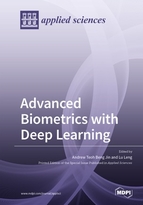Advanced Biometrics with Deep Learning
A special issue of Applied Sciences (ISSN 2076-3417). This special issue belongs to the section "Computing and Artificial Intelligence".
Deadline for manuscript submissions: closed (31 December 2019) | Viewed by 44801
Special Issue Editors
Interests: biometrics; biometric security; machine learning
Special Issues, Collections and Topics in MDPI journals
Special Issue Information
Dear Colleagues,
Biometrics such as fingerprint, iris, face, hand print, hand vein, speech and gait recognition etc. as a means of identity management has become commonplace nowadays for various applications. Biometric systems follow a typical pipeline that is composed of separate preprocessing, feature extraction and classification. Deep learning as a data-driven representation learning approach has been shown to be a promising alternative to conventional data-agnostic and handcrafted pre-processing and feature extraction for biometric systems. Furthermore, deep learning offers an end-to-end learning paradigm to unify preprocessing, feature extraction and recognition based solely on biometric data. The objective of this Special Issue is to invite high-quality, state-of-the-art research papers that deal with challenging issues in advanced deep learning-based biometric systems. We solicit the original papers of unpublished and completed research that are not currently under review by any other conference/magazine/journal. Topics of interest include, but are not limited to:
- Biometric signal, image and video preprocessing based on deep learning
- Biometric feature extraction based on deep learning
- Biometric classification and recognition based on deep learning
- End-to-end deep learning for biometric systems
- Multimodal biometrics based on deep learning
- Spoof detection based on deep learning
- Biometric encryption and template protection based on deep learning.
Prof. Dr. Andrew Teoh Beng Jin
Prof. Dr. Lu Leng
Guest Editors
Manuscript Submission Information
Manuscripts should be submitted online at www.mdpi.com by registering and logging in to this website. Once you are registered, click here to go to the submission form. Manuscripts can be submitted until the deadline. All submissions that pass pre-check are peer-reviewed. Accepted papers will be published continuously in the journal (as soon as accepted) and will be listed together on the special issue website. Research articles, review articles as well as short communications are invited. For planned papers, a title and short abstract (about 100 words) can be sent to the Editorial Office for announcement on this website.
Submitted manuscripts should not have been published previously, nor be under consideration for publication elsewhere (except conference proceedings papers). All manuscripts are thoroughly refereed through a single-blind peer-review process. A guide for authors and other relevant information for submission of manuscripts is available on the Instructions for Authors page. Applied Sciences is an international peer-reviewed open access semimonthly journal published by MDPI.
Please visit the Instructions for Authors page before submitting a manuscript. The Article Processing Charge (APC) for publication in this open access journal is 2400 CHF (Swiss Francs). Submitted papers should be well formatted and use good English. Authors may use MDPI's English editing service prior to publication or during author revisions.







